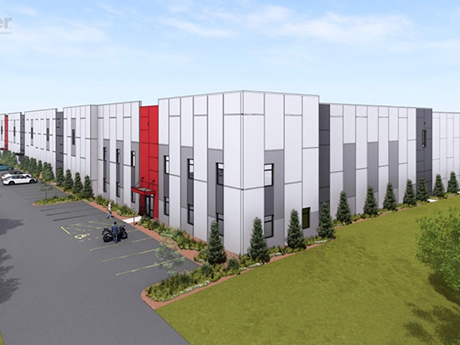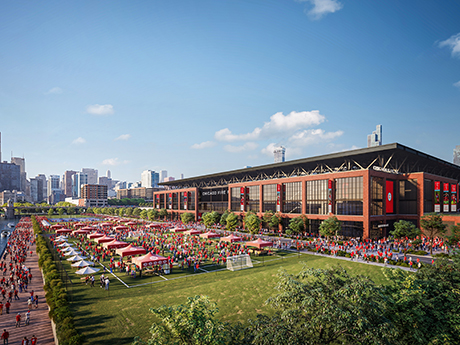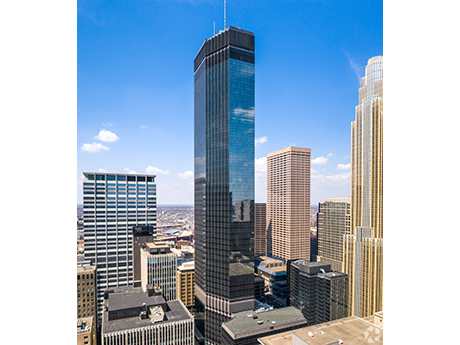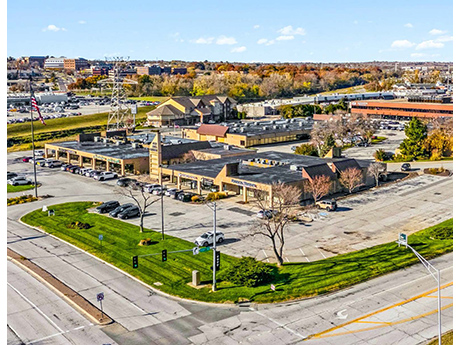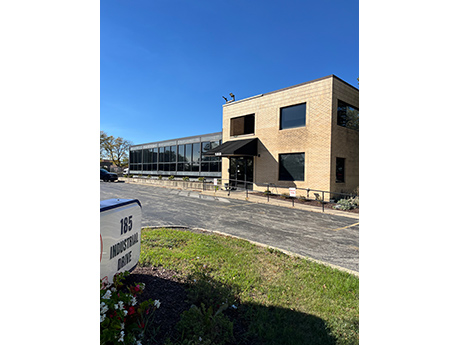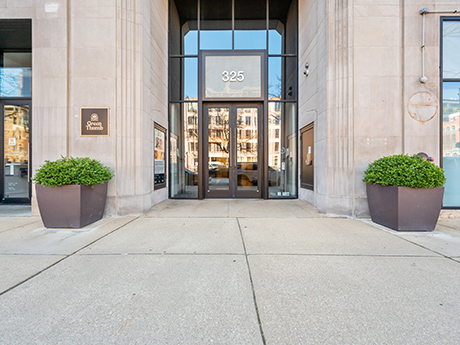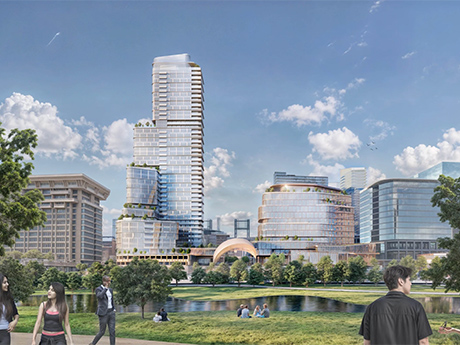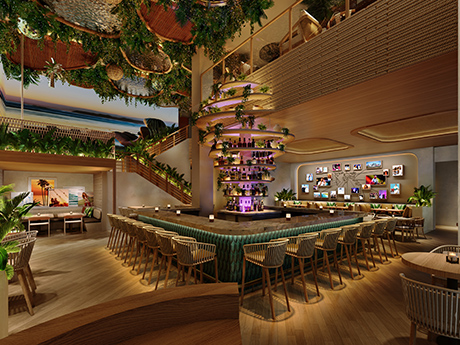By Jeremy Woods and Gwen Rodenberger, CBRE Indianapolis industrial leasing activity in January may have started as cold as the winter temperatures, but activity has only gotten hotter, even as fall wanes into winter. Indiana at one point called itself the Crossroads of America, and the moniker holds true today. Indianapolis is strategically located in the center of the state, with four major interstates running through it. The city’s businesses also benefit because of the second-largest FedEx hub at its airport. As a result, businesses can easily ship to most of the continental U.S. within three days, minimizing outbound shipping costs. In January, occupiers requiring 1 million square feet of distribution space in Indianapolis would have six first-generation shells (equivalent of 104 football fields) to choose from. If you could live with a bit less space, roughly 900,000 to 975,000 square feet, another three options could be added to the tour (adding an additional 47 football fields). Fast forward just three quarters to today, and five of the nine “mega-bulk” warehouses, as they are aptly named, are 100 percent occupied. Even the most seasoned experts would not have predicted the speed at which these spaces would be absorbed. In these …
Midwest Market Reports
By David Hodge and Tom Nickols, NAI Pfefferle While the national headlines often focus on trends such as rising vacancies and cooling rent growth, Milwaukee and its surrounding metros are telling a different story. Here resilience defines the market, and in some cases, opportunities are emerging due to our strategic location, balanced development and supportive business climate. Rate cuts change landscape The Federal Reserve’s recent rate cuts have altered the investment landscape. For the first time in years, capital markets are starting to unlock. Lower borrowing costs are already sparking new conversations with investors who had been sitting and waiting on the sidelines. This adjustment matters. Refinancing options are improving for property owners, development projects are resurfacing after being shelved for high financing costs and capital is beginning to flow again. For occupiers, rate cuts also open doors. Lower borrowing costs for developers encourage new construction and tailored build-to-suit options. This ultimately expands the range of available facilities and results in a healthier environment where tenants can negotiate from a position of choice rather than constraint. While many national markets remain hampered by an oversupply of speculative space, Milwaukee’s pipeline positions it for long-term strength compared to its peers. Local …
By Matt Hunter, Hunter Real Estate Milwaukee’s office market, like many others across the country, is in flux. Rising costs, shifting tenant demands and looming debt maturities are all testing the market’s strength. But out of that pressure comes reinvention, and Milwaukee is proving it’s up for the challenge. High-quality, well-located, amenity-rich office buildings are more important than ever. They’re essential to attracting and retaining top talent. Office buildings don’t just serve the tenants that occupy them, they grow the tax base, support local businesses, drive housing demand and help build a more vibrant and economically resilient city. One of the most defining features of Milwaukee’s current office market is what’s not happening: there’s virtually no new construction. With high interest rates, continually increasing construction costs and economic uncertainty, ground-up office development has largely stalled. This has created a limited supply of modern, Class A office space, just as tenants are placing greater emphasis on quality. That supply-demand imbalance is driving increased competition for top-tier buildings and putting upward pressure on rents in this high-end segment. Tenants want less space but better-quality space, and they’re willing to pay a premium for it. This is a significant opportunity for landlords of …
While the health of the retail market along the Magnificent Mile continues to recover incrementally with a rebound in foot traffic following a prolonged downturn, Chicago’s neighborhoods and suburbs are bustling with leasing activity. In fact, limited retail supply in the suburbs and throughout most of the city’s neighborhoods is one of the biggest challenges facing the market, according to Michael Flinchbaugh, an associate director with Chicago-based Bradford Allen. He says the dynamic has pushed up rents, leading to more national retailers entering corridors that have historically been occupied by local stores. “Groups that are not as well capitalized are struggling to find affordable space for lease,” says Flinchbaugh. The Loop, on the other hand, is sitting at a vacancy rate around 30 percent, according to Flinchbaugh. He says the hope is that the number of office-to-residential conversions slated to occur in the next two to three years will bring retailers back to the submarket as it becomes more of a live-work community. The Loop is located south of the Chicago River, while the Magnificent Mile is situated on the city’s Near North Side. Long known for its high-end shops, hotels and restaurants, the one-mile section of Michigan Avenue referred …
By David Goldfisher, The Henley Group Secondary and tertiary office markets across the Midwest, including Chicago, Minneapolis, Madison, Milwaukee, Cleveland, Cincinnati, Columbus and St. Louis, are facing mounting pressure. While each city has its own challenges, a common theme is clear — vacancies remain high and liquidity is thin. Tenant shuffling One of the defining dynamics today is tenant reshuffling rather than net growth. As leases expire, employers frequently move from one building to another, seeking modernized space and stronger amenities. Renovating in place is disruptive and costly, while relocating allows businesses to upgrade with minimal operational downtime. This “musical chairs” effect highlights a deeper structural issue. There are only so many large anchor tenants in Midwest cities and few new entrants are seeking major blocks of space. There is more repositioning for existing tenants than attracting new ones. Flight to quality Landlords and developers are competing to deliver amenities that encourage office attendance and support talent retention. Modernized lobbies, tenant lounges and flexible collaboration areas have become standard expectations. Hines’ upgrades at Chicago’s 333 West Wacker Drive and 601W Cos.’ reinvestment in the Old Post Office demonstrate the scale of investment required. But not all landlords can compete. With …
By Sam Rolfe, The Lerner Company It seems Omaha’s retail market shows no signs of slowing down from a position of strength, which received a tangible boost when the metro-area population hit the magic 1 million mark. It’s funny that this population hurdle opens the eyes of retailers so much more than 970,000 would, but there’s no doubt that it does, and the market has reacted accordingly, with year-over-year asking rents up 5.4 percent. The seemingly rapid growth and development have not vastly affected the city’s historically strong fundamentals and high occupancy rates however, with the vacancy rate in the metro at 4.4 percent. This low vacancy is partially a byproduct of the historically low supply that has plagued the market in recent years. Over the last decade, we have seen vast westward growth and somewhat stagnant activity in the urban core and central region. Although the westward march continues, it is now coupled with large amounts of urban development, making the city’s retail market strong within eastern submarkets. The old adage “retail follows rooftops” has held true throughout this growth cycle, as retail developments follow the suburban growth of both homes and apartments. One example of this is at …
By Marc Hale, DarwinPW Realty/CORFAC International The Chicagoland industrial market continues to stand out as one of the most important in the country. Its location at the center of the U.S. transportation network gives companies the ability to reach nearly one-third of the nation’s population within a single day’s drive. Six Class I railroads, an abundance of intermodal facilities and seven major interstate highways all converge here, making it one of the most efficient distribution platforms in North America. Chicago O’Hare International Airport also ranks among the top cargo airports in the world, adding critical global connectivity. These advantages are reinforced by a large and diverse labor pool, which has long supported the region’s position as a major hub for manufacturers, distributors and logistics providers. The area’s role as a manufacturing hub is further reinforced by its proximity to major steel mills and primary metal production facilities, the depth of its skilled workforce and plentiful access to water from Lake Michigan, which has long supported heavy industry and advanced manufacturing across the region. The market’s vacancy rate has been trending higher, moving from 5.2 percent in the third quarter of 2024 to 5.9 percent in the third quarter of 2025. …
By Nicole McAleese, Urban Innovations As autumn arrives, Chicago’s commercial real estate market continues to evolve in response to changing workplace strategies and a growing return-to-office (RTO) movement. With major employers tightening in-office attendance policies, both landlords and tenants are adapting to new demands around space, flexibility and location. Shift in tenant behavior Over the past year, Chicago has seen a noticeable shift in how companies are approaching their office needs. Where many tenants once sought short-term lease extensions or downsized footprints during the height of hybrid experimentation, 2025 has brought renewed interest in long-term planning and, in some cases, expansion. Several high-profile lease transactions underscore this trend. Stripe recently doubled its Chicago office space to 89,000 square feet, while law firm Arnold & Porter relocated from the Loop to a new 40,000-square-foot lease, according to Crain’s Chicago Business. While some firms continue to downsize or consolidate, there’s a clear cohort of companies reinvesting in physical office environments that support collaboration, talent attraction and cultural cohesion. These trends mirror national patterns. According to CRE Daily, a growing number of U.S. employers are enforcing stricter in-office attendance, accelerating the shift away from a purely remote or hybrid-first mindset. The Archie RTO …
By Emily Ackley, NAI DESCO The St. Louis retail market could be perceived as a contrasting story — national headlines continue to spotlight store closures and shifting consumer habits, and yet on the ground, St. Louis is working to write a quite different narrative. Vacancy rates remain tight, redevelopment projects are reshaping corridors and both suburban and urban districts are evolving to meet the demands of today’s consumers. It is not a market without its challenges, but St. Louis retail is far from stagnant. Market conditions As of the second quarter of 2025, the St. Louis retail market experienced a dynamic shift as a result of low vacancy rates, evolving consumer behavior and significant redevelopment projects across the St. Louis MSA. The overall retail vacancy rate stands at 4.7 percent, reflecting a 40-basis-point decrease quarter over quarter and an 80-basis-point decrease year over year, indicating a tightening market. Leasing activity remains robust, particularly in suburban areas of St. Louis, such as West County and St. Charles County, where vacancy rates have decreased by up to 140 basis points in the past year. This is being supported by a combination of steady population growth in the suburbs, shifting migration patterns and …
By Lindy Beyer and Matt Rau, CBRE Kansas City is a special place. We have long been known for our renowned barbecue, jazz and most recently, as the city where Taylor Swift’s fiancé works. Retail is at the core of our city, attracting visitors from all over the world to experience our city’s welcoming and rich culture. As the metro area has grown, so has the retail market. We are currently experiencing a period of robust growth, fueled by a combination of strong suburban demand, exciting new mixed-use developments and the appeal of big box vacancies. Sports have been an additional driver as the city continues to invest in its athletic and entertainment offerings. These venues attract large crowds — generating foot traffic and boosting sales for nearby retailers. Retail occupancy rates in Kansas City have increased from 93 percent to 95.1 percent in the last five years, showing the strong overall demand in the market. This is especially notable as there have been over 2.6 million square feet of new retail space delivered over that same time frame, with a large portion contained in mixed-use developments. Overall growth in the Kansas City submarkets has triggered a higher demand for …
Newer Posts



